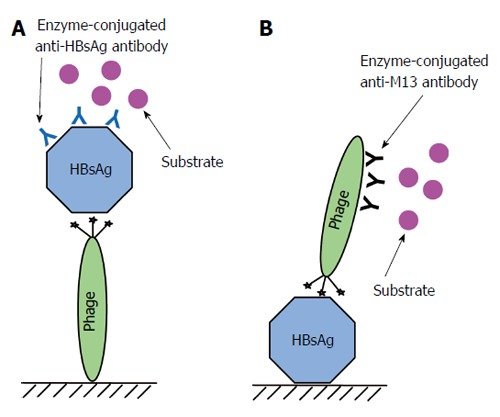Figure 5.

Phage-ELISA for detecting hepatitis B virus surface antigen. A: Major steps used in an assay for detecting hepatitis B virus surface antigen (HBsAg) by immobilizing phage carrying the peptide on a solid support. The phage harboring the peptide is immobilized on a solid support. The unsaturated area of the solid phase is blocked by 10% milk diluent. The sample containing HBsAg is added to interact with the peptide. Mouse anti-HBsAg antibody is added to interact with the captured HBsAg. Then anti-mouse antibody conjugated to an enzyme is added to interact with the anti-HBsAg antibody. Finally, substrates for the enzyme are added to produce a measurable signal; B: Major steps used in an assay for detecting HBsAg immobilized on a solid support using a phage carrying the peptide. A sample containing HBsAg is immobilized on a solid support. The unsaturated area of the solid phase is blocked by 10% milk diluent. The phage harboring the peptide is added to interact with immobilized HBsAg. Anti-M13 phage antibody conjugated to an enzyme is added to interact with the bound phage and substrates for the enzyme are added to produce a measurable signal. ELISA: Enzyme-Linked Immunosorbent Assay.
